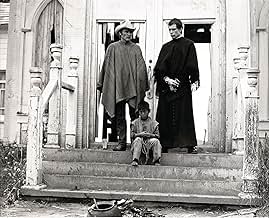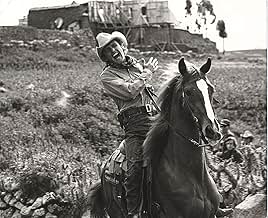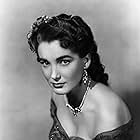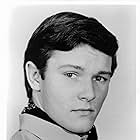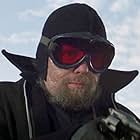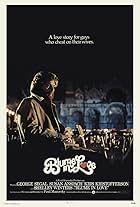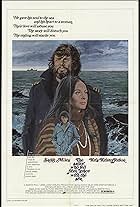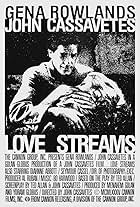IMDb RATING
6.1/10
2.8K
YOUR RATING
After a film production wraps in Peru, an American wrangler decides to stay behind to witness the ways that filmmaking affects the locals.After a film production wraps in Peru, an American wrangler decides to stay behind to witness the ways that filmmaking affects the locals.After a film production wraps in Peru, an American wrangler decides to stay behind to witness the ways that filmmaking affects the locals.
- Awards
- 1 win
Richmond L. Aguilar
- Gaffer
- (as Richmond Aguilar)
James Contrares
- Boom Man
- (as James Contreras)
Storyline
Did you know
- TriviaAfter the success of Easy Rider (1969), Universal Studios created a youth division, making "semi-independent" films for low budgets in hopes of generating similar profits. The idea was to make five movies at $1 million or less, not interfere in the filmmaking process, and give the directors total control and a share in the profits.
- GoofsBoom mic reflected in photo on mantelpiece when Kansas is made to beg for the fur coat.
- Quotes
Mrs. Anderson: You know, I had fantasies like that, about being beat up. Did you ever have a fantasy about women beating you up? Or don't cowboys have fantasies?
- Crazy creditsThere is a nearly-15-minute gap between the first title card, "A FILM BY DENNIS HOPPER," and the other title card, "THE LAST MOVIE".
- ConnectionsFeatured in The American Dreamer (1971)
Featured review
Rarely does an opportunity come like this. I would like to encourage you to share it.
First, you should know that I am not representing this as a "good" movie. At the same time I am putting it on my list of "films you must see."
How can this be?
This thing fails to engage emotionally. It is unlike, say "Blue Velvet" which had both a visceral connection and an ephemerally complex narrative. Each reinforces the other way past the horizons we can see and understand, and you end up with a life altering experience. Most of the films on my "must see" list are like this.
But this is different and the missing factor is "The Other Side of the Wind." That movie is Orson Welles' last project, what he considered his greatest reach and most perfectly conceived. Welles' innovation was the exploration of multiple narrative techniques in the same weave, and then denoting them by distinct visual modes. Sort of a meta-"Peter and the Wolf," but with light.
We'll never see that movie and it is just as well because it is more life altering in the imagination than it ever could be in the real theater experience. While Welles was noodling around with windsides, he engaged every intelligent filmmaker then living, Godard, Huston, Franco and yes, Hopper.
Hopper is an absorber of ideas, not a generator and I believe his sponge absorbed some of that wind and that is what we have here.
There are a few clever notions:
A movie as a re-enactment of a history that is a re-enactment of history of a movie.... all as religion.
A man whose life is a bad movie, the guy behind the faux movie within, portrayed by someone whose life is a bad movie.
A style of revealing that critics bluntly tag "nonlinear," though it is anything but. It just doesn't follow any timeline in a single reality but jumps realities.
Each of this represents a phenomenon I call folding and the three are themselves folded. That it doesn't emotionally engage us is a minor sin. That much of the construction was incompetently done by the drunk portrayed in it is less a sin than a charm.
Now. If you have clever moviewatching skills, you can add a fourth and fifth engine to this. Your own movie, of course. Any serious watcher will do this anyway, with any movie, but there is a seductive socket here for you to enter, much like the testy prostitute Kansas finds.
And of course, on the other side of your film, you have Welles'.
Ted's Evaluation -- 4 of 3: Every cineliterate person should experience this.
First, you should know that I am not representing this as a "good" movie. At the same time I am putting it on my list of "films you must see."
How can this be?
This thing fails to engage emotionally. It is unlike, say "Blue Velvet" which had both a visceral connection and an ephemerally complex narrative. Each reinforces the other way past the horizons we can see and understand, and you end up with a life altering experience. Most of the films on my "must see" list are like this.
But this is different and the missing factor is "The Other Side of the Wind." That movie is Orson Welles' last project, what he considered his greatest reach and most perfectly conceived. Welles' innovation was the exploration of multiple narrative techniques in the same weave, and then denoting them by distinct visual modes. Sort of a meta-"Peter and the Wolf," but with light.
We'll never see that movie and it is just as well because it is more life altering in the imagination than it ever could be in the real theater experience. While Welles was noodling around with windsides, he engaged every intelligent filmmaker then living, Godard, Huston, Franco and yes, Hopper.
Hopper is an absorber of ideas, not a generator and I believe his sponge absorbed some of that wind and that is what we have here.
There are a few clever notions:
A movie as a re-enactment of a history that is a re-enactment of history of a movie.... all as religion.
A man whose life is a bad movie, the guy behind the faux movie within, portrayed by someone whose life is a bad movie.
A style of revealing that critics bluntly tag "nonlinear," though it is anything but. It just doesn't follow any timeline in a single reality but jumps realities.
Each of this represents a phenomenon I call folding and the three are themselves folded. That it doesn't emotionally engage us is a minor sin. That much of the construction was incompetently done by the drunk portrayed in it is less a sin than a charm.
Now. If you have clever moviewatching skills, you can add a fourth and fifth engine to this. Your own movie, of course. Any serious watcher will do this anyway, with any movie, but there is a seductive socket here for you to enter, much like the testy prostitute Kansas finds.
And of course, on the other side of your film, you have Welles'.
Ted's Evaluation -- 4 of 3: Every cineliterate person should experience this.
- How long is The Last Movie?Powered by Alexa
Details
- Release date
- Country of origin
- Official site
- Languages
- Also known as
- Последний фильм
- Filming locations
- Chinchero, Peru(movie set on Plaza de Chinchero)
- Production company
- See more company credits at IMDbPro
Box office
- Budget
- $1,000,000 (estimated)
Contribute to this page
Suggest an edit or add missing content



